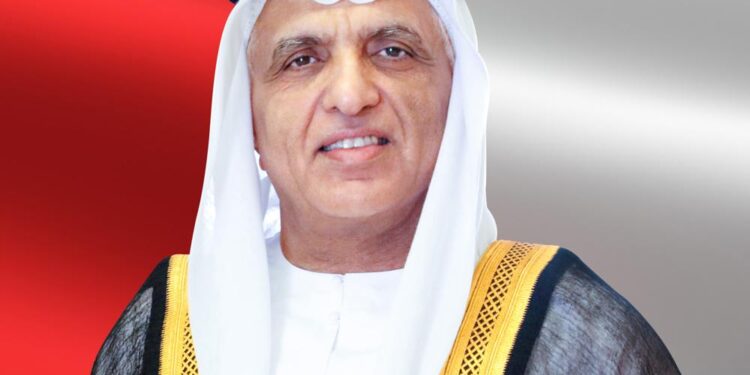Ras Al Khaimah and Guangdong Forge Strategic Alliance to Propel Hydrogen Energy Innovation
In a landmark move to deepen international collaboration within the energy sector, the Ruler of Ras Al Khaimah recently hosted two senior delegations from China’s Guangdong Province. This high-profile visit culminated in the endorsement of a groundbreaking agreement centered on hydrogen energy—a vital element in the global shift toward sustainable and renewable power sources. By combining their respective strengths in hydrogen technology, both regions aim to stimulate innovation, attract investment, and accelerate efforts against climate change.
This partnership highlights an evolving dynamic between the United Arab Emirates and China, underscoring their mutual dedication to pioneering clean energy advancements that could reshape future energy landscapes.
Core Elements of the Hydrogen Energy Collaboration
- Collaborative Research Programs: Joint ventures focused on advancing hydrogen production methods and practical applications.
- Technology Exchange: Facilitating knowledge transfer to enhance technical expertise across both regions’ industries.
- Investment Frameworks: Establishing channels for funding infrastructure projects related to hydrogen energy development.
This alliance positions Ras Al Khaimah as an emerging hub for hydrogen innovation while reinforcing its commitment to sustainable economic growth through environmentally responsible initiatives. It also exemplifies how cross-border partnerships can effectively address global energy challenges by pooling resources and expertise.
Expanding UAE-China Cooperation: A New Chapter in Clean Energy Development
The arrival of Guangdong’s government representatives marks a significant milestone in UAE-China relations concerning renewable energy collaboration. Discussions during this visit concentrated on harnessing hydrogen as a clean fuel alternative, culminating in an agreement designed to foster cutting-edge projects that will drive forward both nations’ sustainability agendas.
The pact emphasizes several strategic priorities:
- Joint Innovation Initiatives: Developing next-generation technologies for efficient hydrogen generation and utilization.
- Sustainable Investment Opportunities: Mobilizing capital towards building resilient renewable infrastructure across both territories.
- Expertise Sharing Programs: Facilitating exchanges between scientists, engineers, and policymakers focused on green technology advancements.
The partnership leverages complementary advantages—such as the UAE’s strategic geographic location serving as an international trade nexus alongside China’s robust manufacturing ecosystem—to create synergies that extend beyond economic benefits into environmental stewardship. This model sets a precedent for future multinational collaborations aimed at accelerating global decarbonization efforts.
Economic Benefits and Regional Growth Catalyzed by Hydrogen Initiatives
The newly inked agreement between Ras Al Khaimah’s leadership and Guangdong officials signals promising prospects for regional economic transformation fueled by emerging hydrogen markets. Anticipated outcomes include job creation across multiple sectors—from research laboratories to industrial plants—and increased foreign direct investment attracted by innovative clean-tech ventures.
Burgeoning local enterprises stand poised to capitalize on expanding opportunities within this rapidly growing industry segment as governments worldwide intensify commitments toward net-zero emissions targets. The International Energy Agency (IEA) forecasts that global demand for green hydrogen could surge over 20-fold by 2030 compared with current levels—highlighting vast potential market expansion benefiting early adopters like Ras Al Khaimah.
This initiative is expected not only to invigorate traditional sectors such as transportation (through fuel cell vehicles) but also manufacturing processes seeking low-carbon alternatives. Additionally, workforce development programs linked with academic institutions will enhance skillsets necessary for sustaining long-term industry growth.
- Diversification of regional economies reducing reliance on fossil fuels;
- A more resilient supply chain supporting stable energy availability;
- A measurable reduction in carbon footprints contributing positively toward climate goals;
Together these factors underscore how embracing green technologies like hydrogen can serve dual purposes: fostering sustainable development while driving competitive advantage within global markets increasingly prioritizing environmental responsibility.
Conclusion: Strengthening Global Clean Energy Partnerships Through Hydrogen Collaboration
The recent engagement between Ras Al Khaimah’s ruler and Chinese delegations from Guangdong Province represents more than just diplomatic goodwill—it embodies a shared vision committed to advancing clean energy frontiers via innovative use of hydrogen technologies. The signed agreement aligns closely with worldwide sustainability objectives outlined under frameworks such as the Paris Agreement. As seen globally through initiatives like Volkswagen Anhui’s electric vehicle rollout targeting Chinese consumers , collaborative efforts are essential drivers behind transformative shifts toward greener economies.
This partnership not only fortifies bilateral ties but also sets an inspiring example encouraging other nations or regions aiming at similar transitions into renewable energies powered by innovative solutions such as green hydrogen production.
The unfolding developments will be closely monitored by stakeholders eager to replicate successful models fostering sustainable growth while addressing pressing environmental challenges worldwide—signaling hope amid urgent calls for climate action through cooperative endeavors spanning continents.














Italy to Deport Egyptian Imam After Controversial Comments at Pro-Palestine Rally